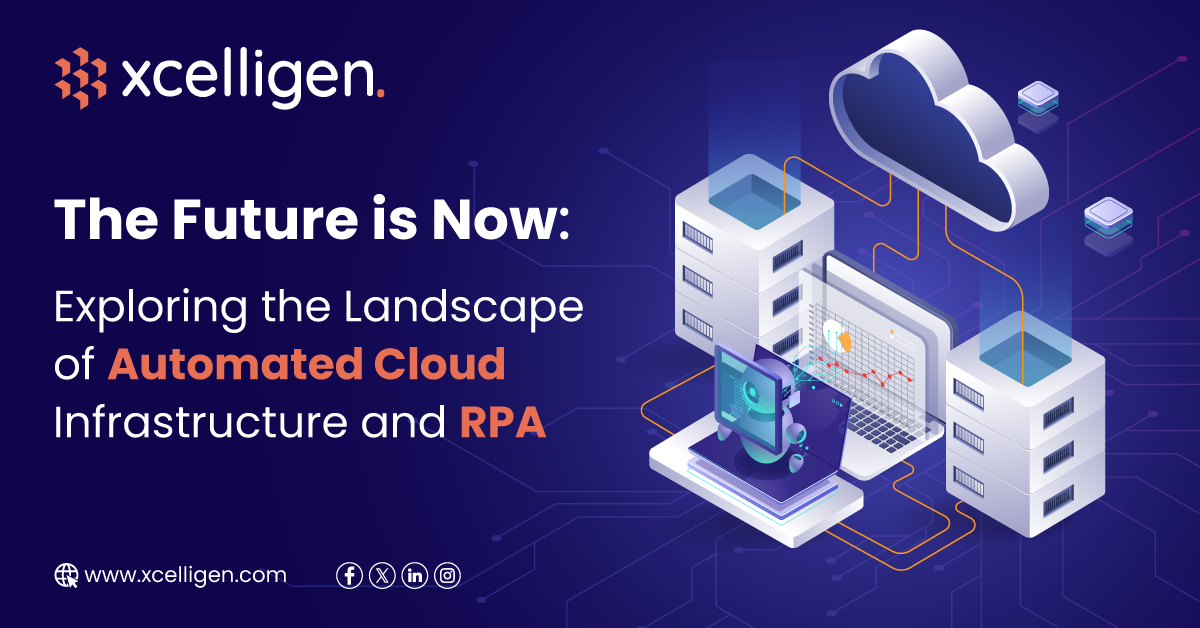In the relentless pursuit of efficiency, scalability, and innovation, businesses are increasingly turning towards a technological synergy that may very well be the backbone of the digital future: Automated Cloud Infrastructure and Robotic Process Automation (RPA). This integration is not just a fleeting trend but a fundamental shift in how we approach business processes and IT infrastructure.
What is Automated Cloud Infrastructure?
Automated Cloud Infrastructure refers to the use of technology to manage and automate the provisioning, deployment, scaling, and management of cloud resources. This approach maximizes efficiency, reduces human error, and enables faster deployment of services and applications.
The Rise of RPA
Robotic Process Automation, or RPA, is the use of software robots, or ‘bots’, to automate highly repetitive, routine tasks traditionally performed by human workers. RPA tools can mimic actions like entering data, processing transactions, and even responding to customer queries.
The Convergence of Cloud and RPA
When combined, Automated Cloud Infrastructure and RPA create a powerful ecosystem that can transform business operations. This convergence allows businesses to deploy RPA bots quickly and efficiently in the cloud, leading to enhanced scalability, flexibility, and cost-effectiveness.
Advantages of Cloud-Automated RPA
Industry Applications
- Finance and Banking: Automated loan processing, fraud detection, and compliance reporting.
- Healthcare: Patient data management, appointment scheduling, and claims processing.
- Retail: Inventory management, order processing, and customer service automation.
- Manufacturing: Supply chain management, invoice processing, and quality control checks.
Challenges and Considerations
While the benefits are clear, businesses must navigate challenges such as integration complexities, choosing the right cloud and RPA providers, and ensuring data privacy and security compliance.
The Road Ahead
The future of business process management lies in the intelligent integration of Automated Cloud Infrastructure and RPA. As technology evolves, we anticipate more advanced AI and machine learning capabilities being integrated into RPA, leading to even more sophisticated automation solutions.
Harnessing the Power of Automation in Cloud Infrastructure
The integration of automation in cloud infrastructure is not just about efficiency; it’s about redefining the IT landscape. Automated cloud setups can self-heal, self-optimize, and even predictively scale, making them incredibly resilient and intelligent. This autonomy in cloud management leads to a dramatic reduction in downtime and maintenance costs.
RPA's Evolution: Beyond Basic Automation
RPA technology has evolved from basic task automation to incorporate more advanced features like natural language processing and decision-making capabilities. This evolution means that RPA can now handle more complex tasks and workflows, making it an invaluable tool for digital transformation.
The Synergy of RPA and Cloud: A Match Made in Tech Heaven
By hosting RPA on cloud infrastructure, businesses benefit from the synergy of two powerful technologies. This combination ensures that RPA solutions are not only more robust and scalable but also more adaptable to changing business needs. The cloud provides a platform for RPA bots to interact seamlessly with various cloud-based applications and services.
Real-World Scenarios and Success Stories
- E-commerce: Automated customer support and real-time inventory updates, leading to enhanced customer experiences and streamlined supply chain management.
- Telecommunications: Automating customer service requests and network management, resulting in improved service delivery and operational efficiencies.
Addressing the Skill Gap
As businesses adopt these advanced technologies, one challenge that emerges is the skill gap. There’s a growing need for professionals who understand both cloud computing and RPA technologies. Upskilling existing staff and attracting new talent are crucial steps in bridging this gap.
Security in the Age of Automation
Security remains a top concern, especially when automating sensitive processes. Cloud providers and RPA platforms are continuously enhancing their security features. Businesses need to adopt a comprehensive security strategy that includes regular audits, compliance checks, and employee training.
Future Trends
- Integration with AI and ML: The next frontier for RPA and cloud technology is the integration with AI and ML algorithms, paving the way for intelligent automation solutions that can learn, adapt, and make decisions.
- Edge Computing: Combining RPA with edge computing can lead to more localized, efficient processing, especially in industries like manufacturing and logistics.
